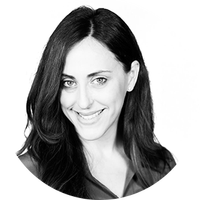The myth of the stay-at-home dad
They're all over the news, but the data shows they're not statistically significant


I have only good things to say about stay-at-home dads, or SAHDs. They serve as a potent symbolic victory in the struggle to get men to do their fair share of domestic work. They bring a valuable set of fresh eyes to parenting. Plus, they know how to change a diaper and pack a lunch. Really, the only problem I have with them is that, statistically speaking, they barely exist.
You might not realize this from the amount of attention they get from the media, including The New York Times who just can't get enough. The Grey Lady's latest was about a recent convention for the National At-Home Dad Network, where a grand total of 100 men got together to swap recipes and talk about what it feels like to spend your wife's money.
No, the problem with SAHDs isn't the men, it's how they have taken on an outsize presence in our cultural imagination. SAHDs' prominence in the media suggests that they are a workable solution to all our unresolved issues with that pesky problem of women who want to work. In this way, SAHDs have become the new opting-out moms, another overblown media trend of the past decade about high-achieving women who chose to the leave the workforce for their families. The catch is that this time, the choice wasn't exactly theirs.
The Week
Escape your echo chamber. Get the facts behind the news, plus analysis from multiple perspectives.

Sign up for The Week's Free Newsletters
From our morning news briefing to a weekly Good News Newsletter, get the best of The Week delivered directly to your inbox.
From our morning news briefing to a weekly Good News Newsletter, get the best of The Week delivered directly to your inbox.
Like with opting-out moms, the fixation on SAHDs distracts us from our very real problems and obviates any need for men or workplaces to change. Again we have a novelty presented as a solution, only this time the script is flipped with men at home and women at work. I'm still waiting for the whole thing to be rewritten.
There are currently two million SAHDs, up from 1.1 million in 1989, making them 16 percent of all stay-at-home parents, according to a recent Pew study. That sounds like a lot, but here's the fine print: only 21 percent of these fathers say they are staying home to take care of their families. That means men make up just over 3 percent of all parents whose main job is tend to the children. The other 79 percent of SAHDs do so because they are ill or disabled, unable to find work, or in school. Compare this to the 73 percent of stay-at-home mothers who told Pew that they are at home specifically to take care of their family.
I don't point this out to undermine the ways men are feeling increasingly invested in family life, which is, by all measures, terrific for women and children alike. Today's dads spend more time with their kids than their parents did, with six in 10 fathers saying they wish they could spend even more time with their family.
Still, when a CBS/ New York Times poll from last year asked parents with children under 18 whether they would quit their jobs and stay home with their kids if money was no object, women were more likely than fathers to say yes. Also, mothers still do nearly double the childcare and housework than fathers, who are more likely to spend more time at the office. So, yes, fathers are doing more than ever, but we are far from parity.
A free daily email with the biggest news stories of the day – and the best features from TheWeek.com
The original opting-out mothers appeared in an article by Lisa Belkin in The New York Times Magazine in 2003, featuring a number of educated women who chose — or so they thought at the time — their children over their career. This near-myth persisted over the years, reappearing in places like New York magazine's 2013 story "The Retro Wife: Feminists who say they're having it all — by choosing to stay home." Following its publication, Belkin published a piece in The Huffington Post saying that she had: "come to see my mistake when writing 'The Opt-Out Revolution.' I confused being pulled toward home with being pushed away from work."
Ultimately, it's easier to pay attention to small groups like opting-out mothers or SAHDs than it is take on the large, intractable forces getting in the way of gender parity. Thinking about doting fathers gives us the semblance of change without anything having to actually shift. We know what the answer is: affordable and reliable child care, decent parental leave policies, and flexible workplaces. Fathers changing diapers is a step in the right direction, but the path ahead remains long.
Editor's note: This article originally overstated the results of a CBS/New York Times poll. It has since been corrected. We regret the error.
Elissa Strauss writes about the intersection of gender and culture for TheWeek.com. She also writes regularly for Elle.com and the Jewish Daily Forward, where she is a weekly columnist.
-
 A running list of the US government figures Donald Trump has pardoned
A running list of the US government figures Donald Trump has pardonedin depth Clearing the slate for his favorite elected officials
-
 Ski town strikers fight rising cost of living
Ski town strikers fight rising cost of livingThe Explainer Telluride is the latest ski resort experiencing an instructor strike
-
 ‘Space is one of the few areas of bipartisan agreement in Washington’
‘Space is one of the few areas of bipartisan agreement in Washington’Instant Opinion Opinion, comment and editorials of the day
